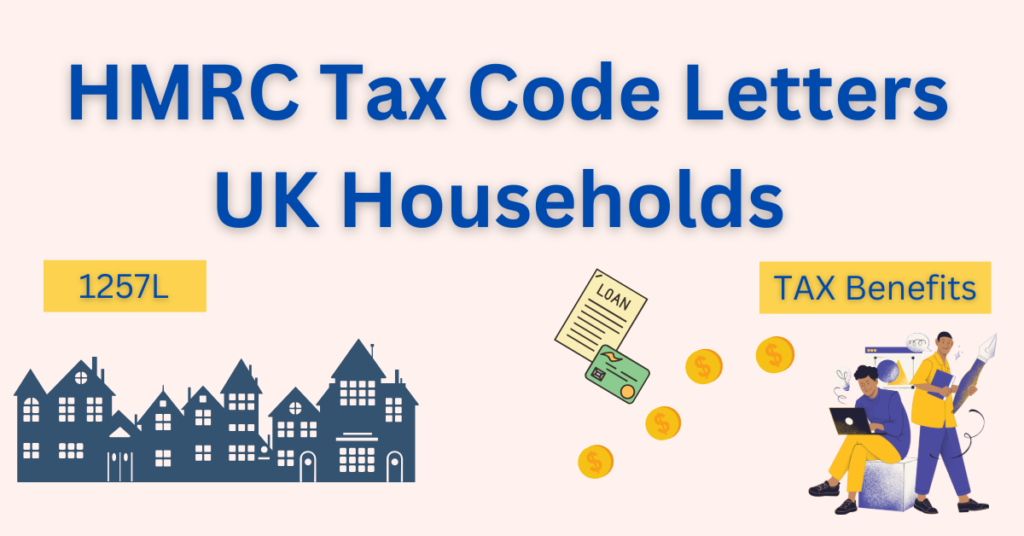Tax codes are essential for determining how much income tax is deducted from your earnings.
For UK households, understanding these codes ensures you’re not overpaying or underpaying tax.
This guide will help you decode HMRC tax code letters, understand their implications, and take necessary actions if discrepancies arise.(The Times)
What Is a Tax Code and Why Does It Matter?
A tax code is a combination of numbers and letters assigned by HM Revenue and Customs (HMRC) to indicate how much tax-free income you are entitled to in a tax year.
Employers and pension providers use this code to calculate the correct amount of tax to deduct from your income.(Compare the Market, Moneyweek)
Key Points:
- Numbers: Represent your tax-free allowance. For example, ‘1257’ means £12,570 tax-free income.
- Letters: Indicate specific circumstances affecting your tax code.(LITRG, Moneyweek)
Understanding your tax code is crucial to ensure you’re paying the correct amount of tax and to avoid unexpected bills or refunds.

List of HMRC Tax Code Letters and What They Mean
Here’s a breakdown of common tax code letters and their meanings:
| Tax Code | Meaning |
|---|---|
| 1257L | Standard tax-free Personal Allowance (£12,570). |
| BR | All income taxed at the basic rate (20%); usually for second jobs. |
| D0 | All income taxed at the higher rate (40%). |
| D1 | All income taxed at the additional rate (45%). |
| K | Indicates you have income not being taxed elsewhere, exceeding your Personal Allowance. |
| M | Received 10% of your partner’s Personal Allowance through Marriage Allowance. |
| N | Transferred 10% of your Personal Allowance to your partner. |
| 0T | No Personal Allowance; used when HMRC lacks sufficient information. |
| S | Scottish taxpayer; income taxed using Scottish rates. |
| C | Welsh taxpayer; income taxed using Welsh rates. |
| W1/M1/X | Emergency tax codes; temporary codes used when HMRC lacks complete information. |
Note: Emergency tax codes like W1, M1, or X are temporary and should be updated once HMRC receives the necessary information. (TaxCodes.uk)
How Do I Know If My Tax Code Is Correct?
It’s essential to verify your tax code to ensure accurate tax deductions. Here’s how you can check:
- Payslip: Your tax code is usually listed on your monthly payslip.
- P60 or P45: These forms, provided by your employer, display your tax code.
- HMRC Online Account: Log in to your personal tax account on the HMRC website to view your current tax code.
- HMRC App: Use the official HMRC app to check your tax code.(Compare the Market, The Sun, The Scottish Sun)
Signs Your Tax Code May Be Incorrect:
- Unexpected changes in take-home pay.
- Receiving a P800 letter indicating overpayment or underpayment.
- Being on an emergency tax code for an extended period.(The Sun, The Sun)
According to a survey, 31% of people who checked their tax code found mistakes, with many overpaying tax by an average of £689. (The Times)
What To Do If Your Tax Code Is Wrong
If you suspect your tax code is incorrect, take the following steps:(Moneyweek)
- Contact HMRC: Reach out via phone or through your online personal tax account to report the discrepancy.
- Provide Necessary Information: Be ready to supply details about your income, benefits, and any other relevant financial information.
- Await Correction: HMRC will review and, if necessary, issue a new tax code.(The Scottish Sun, TaxCodes.uk)
Remember, if you’ve overpaid, you can claim a refund, but there’s a four-year limit to do so. (The Sun)
Special Cases and Regional Codes
Certain situations and regions have specific tax codes:
- Scottish Tax Codes (Prefix ‘S’): Indicate you’re taxed under Scottish rates.
- Welsh Tax Codes (Prefix ‘C’): Indicate you’re taxed under Welsh rates.
- Multiple Jobs or Pensions: May result in codes like BR, D0, or D1.
- Emergency Codes: W1, M1, or X are temporary and should be updated promptly.(AAB, The Sun)
It’s crucial to ensure your tax code reflects your current circumstances to avoid incorrect tax deductions. (GeeksforGeeks)
Frequently Asked Questions (FAQs)
Q1: What is the most common HMRC tax code in 2025?
A: The most common tax code is 1257L, representing the standard Personal Allowance of £12,570.(Personio)
Q2: Why did I receive a 0T or emergency tax code?
A: Emergency codes like 0T are used when HMRC lacks sufficient information about your income or employment.(Raisin)
Q3: How can I change my tax code online?
A: Log in to your personal tax account on the HMRC website and update your details or report discrepancies.
Q4: Can a wrong tax code affect my refund?
A: Yes, an incorrect tax code can lead to overpayment or underpayment, affecting potential refunds or resulting in unexpected tax bills.(The Times)
Conclusion
Understanding your HMRC tax code is vital for accurate tax payments. Regularly checking and ensuring its correctness can prevent financial discrepancies. If in doubt, consult HMRC or a financial advisor to clarify and rectify any issues.(The Sun)
Stay informed and proactive to ensure your tax affairs are in order.